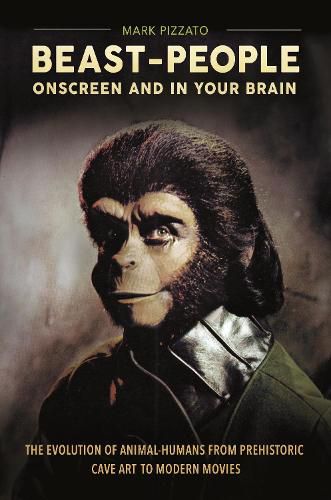Readings Newsletter
Become a Readings Member to make your shopping experience even easier.
Sign in or sign up for free!
You’re not far away from qualifying for FREE standard shipping within Australia
You’ve qualified for FREE standard shipping within Australia
The cart is loading…






A new take on our bio-cultural evolution explores how the inner theatre of the brain and its animal-human stages are reflected in and shaped by the mirror of cinema.
Vampire, werewolf, and ape-planet films are perennial favorites-perhaps because they speak to something primal in human nature. This intriguing volume examines such films in light of the latest developments in neuroscience, revealing ways in which animal-human monster movies reflect and affect what we naturally imagine in our minds. Examining specific films as well as early cave images, the book discusses how certain creatures on rock walls and movie screens express animal-to-human evolution and the structures of our brains.
The book presents a new model of the human brain with its theatrical, cinematic, and animal elements. It also develops a theory of rasa-catharsis as the clarifying of emotions within and between spectators of the stage or screen, drawing on Eastern and Western aesthetics as well as current neuroscience. It focuses on the inner movie theater of memories, dreams, and reality representations, involving developmental stages, as well as the hall of mirrors, ape-egos, and body-swapping identifications between human beings. Finally, the book shows how ironic twists onscreen-especially of contradictory emotions-might evoke a reappraisal of feelings, helping spectators to be more attentive to their own impulses. Through this interdisciplinary study, scholars, artists, and general readers will find a fresh way to understand the potential for interactive mindfulness and yet cathartic backfire between human brains-in cinema, in theater, and in daily life.
Creates a new model exploring the inner theater of human reality perceptions, fantasies, memories, and dreams in relation to art, ritual, everyday actions, and cultural events
Employs neuroscience research, evolutionary theory, and various performance paradigms, drawing on what is known about the animal ancestry and neural circuitry of the human brain to probe the framework of our bio-cultural evolution
Explains how the emotion pictures found in prehistoric caves represent turning points in human awareness
Examines a wide range of beast-people films ranging from the 1931 Dracula to the Twilight series (2008-2012) and the 2014 Dawn of the Planet of the Apes, showing how viewers connect to the films and the potential positive and negative impacts they have
$9.00 standard shipping within Australia
FREE standard shipping within Australia for orders over $100.00
Express & International shipping calculated at checkout
A new take on our bio-cultural evolution explores how the inner theatre of the brain and its animal-human stages are reflected in and shaped by the mirror of cinema.
Vampire, werewolf, and ape-planet films are perennial favorites-perhaps because they speak to something primal in human nature. This intriguing volume examines such films in light of the latest developments in neuroscience, revealing ways in which animal-human monster movies reflect and affect what we naturally imagine in our minds. Examining specific films as well as early cave images, the book discusses how certain creatures on rock walls and movie screens express animal-to-human evolution and the structures of our brains.
The book presents a new model of the human brain with its theatrical, cinematic, and animal elements. It also develops a theory of rasa-catharsis as the clarifying of emotions within and between spectators of the stage or screen, drawing on Eastern and Western aesthetics as well as current neuroscience. It focuses on the inner movie theater of memories, dreams, and reality representations, involving developmental stages, as well as the hall of mirrors, ape-egos, and body-swapping identifications between human beings. Finally, the book shows how ironic twists onscreen-especially of contradictory emotions-might evoke a reappraisal of feelings, helping spectators to be more attentive to their own impulses. Through this interdisciplinary study, scholars, artists, and general readers will find a fresh way to understand the potential for interactive mindfulness and yet cathartic backfire between human brains-in cinema, in theater, and in daily life.
Creates a new model exploring the inner theater of human reality perceptions, fantasies, memories, and dreams in relation to art, ritual, everyday actions, and cultural events
Employs neuroscience research, evolutionary theory, and various performance paradigms, drawing on what is known about the animal ancestry and neural circuitry of the human brain to probe the framework of our bio-cultural evolution
Explains how the emotion pictures found in prehistoric caves represent turning points in human awareness
Examines a wide range of beast-people films ranging from the 1931 Dracula to the Twilight series (2008-2012) and the 2014 Dawn of the Planet of the Apes, showing how viewers connect to the films and the potential positive and negative impacts they have